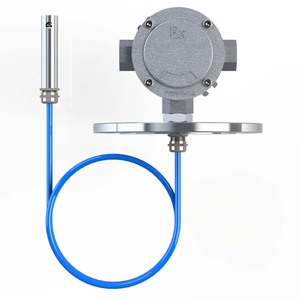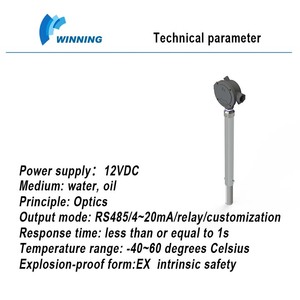
All categories
Featured selections
Trade Assurance
Buyer Central
Help Center
Get the app
Become a supplier

(330 products available)




















Fuel tank testing equipment comes in diverse kinds for distinct testing purposes. Here are some of the common types used:
Pressure Testing Equipment
To check for leaks and structural integrity, pressure testing equipment subject fuel tanks to pressurized air or liquid. Any weakness manifest as a fuel leak will be indicated by the pressure test; therefore, pressure gauges, pumps, and sealant scanning. Also used in this test is a pressure safety valve.
Vacuum Testing Equipment
This equipment is similar to pressure testing equipment, but instead of pressure, it uses vacuum. They are commonly used for testing small tanks or complex designs. Vacuum pumps and gauges are the main testing components.
Ultrasonic Testing Equipment
Ultrasonic testing equipment uses ultrasonic waves to detect thickness and possible defects in fuel tanks. This is a non-destructive method that helps to evaluate the condition of a tank without visible examination. It typically comes with a probe and an electronic display that reads the ultrasonic waves.
Dye Penetrant Testing Kits
Dye penetrant testing finds small cracks and leaks. After cleaning the tank surface, the penetrant is applied. Then, a developer is applied to the surface, and the cracks are easily visible. Hence, this kit comes with penetrant, developer, cleaner, and UV light for inspection.
Radiographic Testing Equipment
Radiographic testing equipment, which includes X-ray or gamma-ray, visualizes the internal structure of a tank to check for weld quality and integrity. This method requires safety precautions, as it involves radiation.
Leak Detection Systems
Automated systems for monitoring and detecting leaks in fuel tanks use chemical sensors and software analysis. Also, these systems offer real-time monitoring and quick identification of leak locations.
Heat Testing Equipment
These tools identify leaks and weaknesses by applying heat to a fuel tank. They are mostly used in welding tests. The technique is simple: observe the tank's response to heat, and any leak will immediately show signs of leak.
Flexural Testing Equipment
The flexural testing equipment determines the flexibility and strength of composite materials used in fuel tanks for external reinforcement. This method examines the resistance of materials to flex under given circumstances.
Several important characteristics of fuel tank testers make them effective, reliable, and for varied uses.
Pressure and Vacuum Sealing
Seals are very important to the accuracy of fuel tank testing equipment. For example, a pressure or vacuum test can only be precise when the tank under test is properly sealed. Thus, high-quality seals ensure airtight or watertight integrity, which prevents false readings caused by leaks in the tester.
Precision Gauges
To ensure that minimal changes in pressure, vacuum, or other important parameters are detected, fuel tank testers are designed to contain pressure and vacuum gauges with precise measuring capability. Such accuracy is required as fuel system safety is paramount in handling flammable liquids.
Portability
The testing has to be done even at some remote locations, so it is vital that fuel tank testing equipment are designed to be portable and easy to carry about. It is often designed with light frames and carry handles so that personnel can easily move them from one place to another. Such portability is particularly important in emergency leak detection situations in inaccessible areas.
Durable Construction Materials
A good factor about fuel tank testing equipment is that it is used outside and thus must overcome the many elements such as rain and snow. These are made with materials such as stainless steel, aircraft aluminum, and other durable materials to be protected from the weather and hence last longer.
Safety Features
As fuel tanks are often under pressure or contain hazardous materials, fuel tank testing equipment is integrated with safety valves, protective housings, and pressure release mechanisms to protect those using it while preventing explosion. An explosion proof vacuum gauge is an example of a safety feature. It protects workers from injury in the event of an explosion.
Versatility
Several types of tests ranging from pressure and vacuum to even leak detection can be carried out on fuel tank testing equipment with a few versatile tools. Such versatility may incorporate both pressure and vacuum gauges.
The following guidelines will help buyers make the right choice about fuel tank testing equipment:
Project Requirements
As there are many automotive fuel tank testing equipment, one must understand the project details before placing an order. Such details may include project size, tank types, and specific fuels. Appropriate testing equipment for these project specifics should suffice.
Fuel Compatibility
Consideration of the kind of fuel the tank holds is important since fuel varies in corrosive nature. Only go for equipment built with material that can resist the chemical attack posed by a given fuel.
Testing Standards
To some extent, compliance with industry standards and regulations is important in choosing fuel tank testing equipment. For instance, buyers should look for equipment that meets the EPA, DOT, or other applicable agency's safety and environmental testing requirements. Such conformity ensures legality and adherence to the widely accepted measurements.
Budget
Cost is equally essential to consider when buying fuel tank testing equipment. Buyers may not need to invest in the most sophisticated piece of equipment available because sometimes, just a basic tester will suffice for the purpose. However, there should be no compromise on quality and standards to avoid later expenses due to inaccuracy or non-conformity to regulations.
Training and Support
One must consider the availability of support and training when using fuel tank testing equipment. Buy testers that come with user-friendly instructions or videos to enable their usage. Also, knowledge and assistance from the manufacturer or supplier should be readily available to resolve issues in the testing process.
Monitor Durability
Testing fuel tanks can be harsh and challenging depending on the environment. For this reason, only go for durable testing equipment that can withstand extreme temperatures, weather elements, and even physical impacts, especially in critical working conditions.
Equipment
Assess the available tools for fuel tank testing equipment. Examples of available tools include pressure gauges, vacuum gauges, and safety devices. Always ensure the right accessories are in place to help the testing process become more efficient and accurate, as are the right accessories.
Fuel tank testing equipment is used in various industries, ranging from automotive, aerospace, and marine to power generation and even military. Below are the most common applications:
Automotive Industry
Of all industries, fuel tank testing equipment finds the most common usage in the automotive sector. In this case, pressure and vacuum tests are used to measure fuel tanks to ensure they can handle the internal pressure of the fuel system. Any leak or failure leads to dangerous operation will lead to compromised integrity.
Aerospace Industry
In this space industry, fuel tank integrity is one of the most important safety factors. For instance, ultrasonics, radiography, and heat testing equipment have been invaluable for identifying small fabricators and leaks in fuel tanks of aircrafts and space vehicles. Accountability and safety being the name of the game, these tests ensure only the strong go into the skies.
Marine Industry
Watercraft fuel tanks are subjected to the harshest of conditions, both inside and outside. Hence, testing equipment for pressure, vacuum, and leak detection are the most vital in ensuring that corrosion, waves, and anything else cannot cause tank failure. Fuel tank integrity is essential in not only protecting the vessel but also safeguarding the marine environment from pollution.
Industrial Power Generation
Diesel fuel tanks are used in generators, and thus, their integrity is maintained by the same kind of testing equipment. Pressure and leak detection tests are the first means to protect fuel supply disruption in any critical power systems, such as hospitals and data centers, especially during long outages.
Military Applications
In military operations, fuel tank testing is vital for ensuring the reliability of vehicles and aircraft. For example, non-destructive testing methods such as ultrasonics and radiography provide fuel tanks that are susceptible to enemy action or extreme environmental conditions. Hence, military testers meet the most stringent standards to ensure fuels for military operations.
Emergency Services
In ambulances and fire engines, fuel tank failure is dangerous, so leak detection and pressure testing equipment keep the tanks functioning in first responders' vehicles. Testing equipment ensures that the fuel tanks are up to standard and ready to power life-saving operations.
Manufacturing and Repair Shops
Fuel tank repair and manufacturing workshops also use fuel tank testing equipment to create and fix the tanks. For example, leak detection and pressure testing equipment ascertain newly manufactured tanks are in good shape and repaired ones fixed.
Below are some benefits of using fuel tank testing equipment:
Leak Detection
Testing equipment efficiently finds leaks in fuel tanks, which is disastrous if not detected. Fuel wastage and environmental hazards as well as safety hazards will occur when there are unnoticed leaks. However, detecting and fixing leaks early saves money, protects the environment, and even reduces the chance of explosion.
Enhanced Safety
By guaranteeing the integrity of fuel tanks, testing equipment ensures safety during operations. It also prevents catastrophic incidents like explosions and fires that are associated with faulty tanks. In hazardous environments, such as industrial plants and garages, the equipment reduces risks and offers a safer working environment.
Improved Performance
When fuel tanks undergo testing, any weakness found causes immediate attention, leading to improved performance. Henceforth, optimal fuel distribution occurs, system efficiency improves, and equipment or vehicles perform at their peak when the tanks are in good condition.
Longevity
Fuel tank testing equipment does wonders in extending tank life. Identifying problems early on and then fixing them prevents further damage. So, the tanks hold up for a longer time, saving the cost of replacement and giving more value to the dollar.
Compliance with Regulations
EPA and other regulatory agencies set standards, and testing equipment helps meet them. This ensures legal compliance, thus avoiding penalties, fines, and even shutdowns. Furthermore, it promotes environmental protection measures.
Cost Savings
Fuel tank testing equipment saves costs by allowing early leak detection and repair of leaks and even weaknesses. This helps prevent more expensive repair or replacement systems, ensure optimal efficiency, and minimize downtime. Henceforth, run on fewer operational costs and save money.
Peace of Mind
Knowing that the fuel tanks are in their right state brings peace of mind for personnel and operators. It brings confidence that the systems are safe and efficient, thus enhancing productivity.
A: Tools and gadgets for conducting pressure, vacuum, leak, and other integrity tests on fuel tanks are called fuel tank testing equipment. They ascertain the tanks are safe, reliable, and in good shape for the services they were meant for.
A: Pressure testers, vacuum testers, leak detectors, and non-destructive testers such as ultrasonic and radiography are popular fuel tank testers. In addition, durability and flexibility testers also examine fuel tank materials for strength and endurance, while heat testers check tank welding.
A: Fuel tank testers detect leaks efficiently, enhance safety, increase tank life, save cost, comply with regulations, and bring peace of mind during operation.
A: Automobiles, aerospace, marine, power generation, military, and even emergency service fuel tank testers are employed to ascertain the safety and reliability of their operations.
A: Fuel tank testing equipment subject tanks to pressure or vacuum to identify even the minutest leaks. There could also be leak detection equipment that uses chemical sensors to monitor real-time leaks.
A: There are many kinds of fuel, and each has its own corrosive characteristics. Consequently, only testing equipment built with high-resistant materials for dealing with aggressive fuels will ensure longevity and reliability.